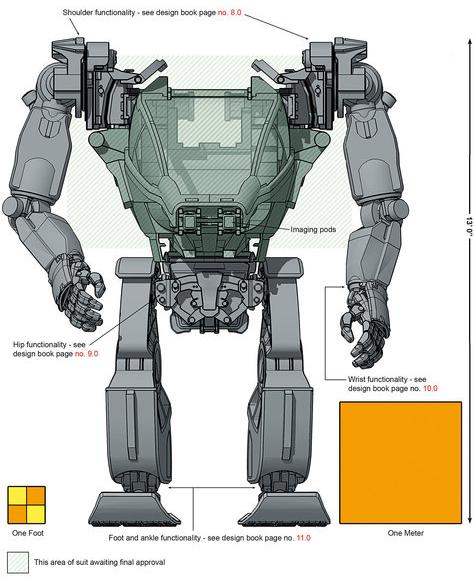Okay, so still no comments on going for space factories or using debt instruments to massively increase our rate of expansion, which is a little irksome as it's both a game-changing idea and one that is so common in the real world that there are a number of different avenues for it, many of which are entire marketplaces unto themselves:
I read it! I just didn't comment because new years eve celebrations and all. Convinced me to build a small shipyard dedicated to Arc Reactors. Given the new numbers edited into the Finance doc (presumably by
@Hoyr) we can build a single product Space Factory I for 2.5 billion credits.
That still leaves us with over my billion credit reserve so I'll add that into my vote in a couple hours.
For reference a 5GW Arc Reactor Space Factory I can produce 1,000,000 Arc Reactors per quarter. That's 200 billion credits per quarter right there starting in either 2174-Q1 or 2174-Q2 depending.
@Hoyr - With regards to the build time of single product factories, is the time reduction -1 or -2? Given that single product seems to be an outgrowth of specialized it would make sense that the time reductions stack to -2 rather then single product having the same time reduction as specialized.
Your right that this isn't an appropriate method of receiving funds but it might be a good investment for PI to start giving out venture capital. But that's probably something for next year when our economic domination really kicks into high gear.
2) Going public. Again, right out, but I wanted to mention it for completeness' sake, and the fact that we could probably get a rather insane amount of money together even if we only sold, say 30% of the company's equity. Given the super-massive mindshare, proven profitability, multi-tens-of-billion credit sales contracts, and intellectual property assets involved we could probably get tens of trillions of credits this way.
Our equity would be insane. We have a Debt:Equity ratio of 0:1, 29.4 billion credits in assets, and over the next year alone have ~75 billion credits of
profit in contracts.
But of course we're basically
never going to go public. Waaaaaaaaaaaa...aaaaaay too many disadvantages.
3) Business loans. As mentioned before, I think that our credit rating would have to be enormous, for the same reasons our share price would be several dozen if not hundreds of times our annual earnings. The strength of our Arc Reactor patent and factories alone should easily be worth 500 billion, maybe up to the 2 trillion credits I think we should be looking for; there ought to be banks lining up around the block to throw money at us after all. Loan rates around 3-6 percent interest annually, given all of PI's assets and that I intend this to be a 48-60 month loan.
Business loans could be a very powerful source of capital. Just using the (current) citadel mandated 40 billion credits of sales and a 5% RRR our patent of the Arc Reactor in Citadel space is worth 800 billion. Now on one hand indications are that this is a severe underestimation of the value of the patent so the value should be higher. On the other hand however banks tend to be rather conservative.
All in all I figure we could get a trillion credit loan against our Arc Reactor patent.
4) Corporate bond issue. A bit more uncertain, and a hell of a lot more complicated than 3), but a 5-year corporate bond issue should be relatively straightforward for a finance team to set up, and could net us probably more money in total than the business loan idea. 2 trillion should be small potatoes for the galactic corporate bond market to fund, heck the Alliance alone could probably foot the bill, but the interest rate would be higher, around 6-10 percent given we'd certainly rate investor grade bond rates.
For reference the 2009 bond market was estimated at 82 trillion dollars. For the future bond market; 2 trillion would be a drop in the bucket.
All in all as long as we are certain we can repay the debt, something we should be if we're even considering it, then there isn't any reason for us to pick a corporate bond over a loan.
Hmm... you could also advance you biotic training a bit with the omake.
Well. I'll have to give this a try sometime soon.
Yeah

. I'm not totally sure on mirror/lens materials or thermal lost to them but I think you could do some sort of ceramic glass. That stuff can handle temperature fluxes of thousand of degrees I hear.
Atomic Rockets said:
I hear you ask "but why doesn't the beam slice up the inside of the turret?" The key is
power density.
For instance, a naughty little boy will find that sunlight does not do much to his skin except warm it up a bit. However, if you whip out a magnifying glass you can focus the sunlight to a white-hot pinpoint that will easily incinerate ants. The magnifying glass increases the power density of the sunlight. So inside the turret, the weapon beam is something like 20 centimeters in diameter which means a power density too low to fry the internal mirrors. At the end, the beam expander mirror evenly shines the laser beam over the primary mirror. That mirror then acts like the magnifying glass in the hands of the anticidal little boy, focusing the diffuse laser beam down to an incinerating pin-point on the hapless target.
Isaac Kuo points out that another factor keeping the laser from chopping up the turret is that the internal mirrors are
dielectric mirrors. Those babies can be up to 99.999% reflective. Meanwhile if target has conventional mirror plating it will only be 95% reflective, absorbing
5,000 times as much laser energy. Dielectric mirrors would be difficult if not impossible to manufacture in pieces large enough to cover a missile or spacecraft.
At 99.999% reflective a 10MW laser would loose 100W of power. So if the laser was kept running non stop a 100kg mirror would take 23 hours and 20 minutes to heat up
one degree Celsius! Even a 1kg mirror would take 14 minutes per degree.
I love how unlike a lot of Sci-Fi ME at least
tries to be accurate to the real world, with the reasonable exception of their plot material, but it's irritating how
wrong they can be at times.
Still 100kg is not all that much (though maybe high COIL's lens is 150kg and its what 1.8 or so meters wide?). Even guesstimating that the total mass is say 300kg? Getting the thing to do 10 revolutions per second give me a torque estimate of of ~54,000. Which is survivable or so the calculators claim. Its got like 5% of the mass of a Phalanx. Using the same lazy estimate the phalanxe deals with twice as much.
Of course that's ignoring the "fun" of using ME field to drop the mass and thus rotational stress. And also not considering the adaptive optics or other aiming aids.
Hmm. You make a good argument. I'll have to edit the Accipiter so it goes with my original plan of hiding inside the ship's hull since dodging is officially impossible.
Let me figure out ME combat speeds first they are a bloody mess. That said if a frigate sat there and did nothing and the drones shot at it...
Eh. The Accipiter has enough acceleration that you can likely get away with treating the Frigate as a stationary object.
Well lowest estimate for a 100m spinal is ~316GJ, Since the ME shot is going got be fairly small I'm going to ignore impact diameter differences.
This sounds reasonable to me.
And as repulsor weapons have a strong kinetic element they'll hit the shields.
This however really doesn't. Kinetic Barriers don't work on things that have kinetic energy. They work on things that have
mass. Whatever mechanism Repulsors function by, I have some ideas I need to get around to researching and typing up, it's pretty clear they function pretty closely to a particle beam.
Which as per:
Codex: Ablative Armor said:
A warship's
kinetic barriers reduce the damage from solid objects, but
can do nothing to block GARDIAN lasers,
particle beams, and other forms of Directed Energy Weapon (DEW). The inner layer of warship protection consists of ablative armor plate designed to "boil away" when heated. The vaporized armor material scatters a DEW beam, rendering it ineffectual.
are unaffected by kinetic barriers. So it's simply a matter of ripping through the ablative armor. Which shouldn't really do much to stop a Repulsor beam since the Repulsor does most/all of it's damage via kinetics rather then thermal.
A 10cm chugs down 700MW, and we guesstimated that the efficiency was tiny... like ~1%. I'll go with 2% so each repulsor beam is a 14MW weapon. Don't recall the on/off cycle or repulsors but I'll ignore it. The only spinal we aver get stats on has a fire rate of 2 seconds making it a 158GW weapon. Which means in terms or raw power output you need 11 thousand to match.
Uh. Repuslor beams would be a sustained beam. That's why they are
beams rather then
pulses. So there wouldn't be an on/off cycle just like how a rocket engine doesn't have an on/off cycle.
The real question with a repuslor in weapon mode is how tightly focused is the beam. In full engine mode the beam would be a ~100mm in diameter so it would cover an area of 0.031m^2 for a pressure of 806,452 Pascal. For comparison the average champagne bottle has a pressure of 500,000 Pascal and the human bite 1,100,000 Pascal.
However focus that down into a 5mm beam and the pressure spikes to 318.4 GigaPascal. For comparison the ultimate tensile strength of monolayer graphene is 130 GigaPascal and the pressure inside
the Earth's core is 360 GigaPascal.
So when thinking of a Repulsor beam think of a cutting beam with it been more powerful the more tightly focused it is.




 Unethical experiments fine, but some of that stuff... yeah. But the escape stuff, that's real life in the third world (and sometimes the first as well, *twitch*).
Unethical experiments fine, but some of that stuff... yeah. But the escape stuff, that's real life in the third world (and sometimes the first as well, *twitch*).